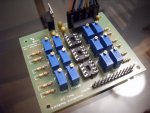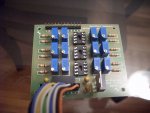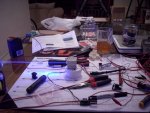- Joined
- Dec 1, 2008
- Messages
- 878
- Points
- 28
Galvo Questions: My galvos are quoted at 20 degrees optical deflection @ 20Kpps which is the default setting. For example on the X axis, does that mean at a maximum it can scan 10 degrees left and 10 degrees right for a total of 20 degrees? I tested with a compass and that seems VERY small. Is it really 40 degrees total - 20 degrees each way from center?
To get 20kpps you will need to scan allot smaller than 20 degreese with those scanners. Think more like 10 degrees. If you tried to scan 20kpps @ 20 degreese you would blow up the scanners.
And yes, 20 degrees means 20 MAX not 20 left and 20 right for a total of 40.
ALSO: I notice that one side of the galvo (where the motor/mirrors actually mount) is shorter than the other. When looking from above, it is rectangular in dimension. Through which side should the beam enter - the short or the long side? It may not even matter but I figure I would ask since this is my first set. Please see attached photo... Thanks!
You want the beam to enter from the side, then hit the bottom mirror, then bounce to the top mirror, then exit the front.
-Brooks







